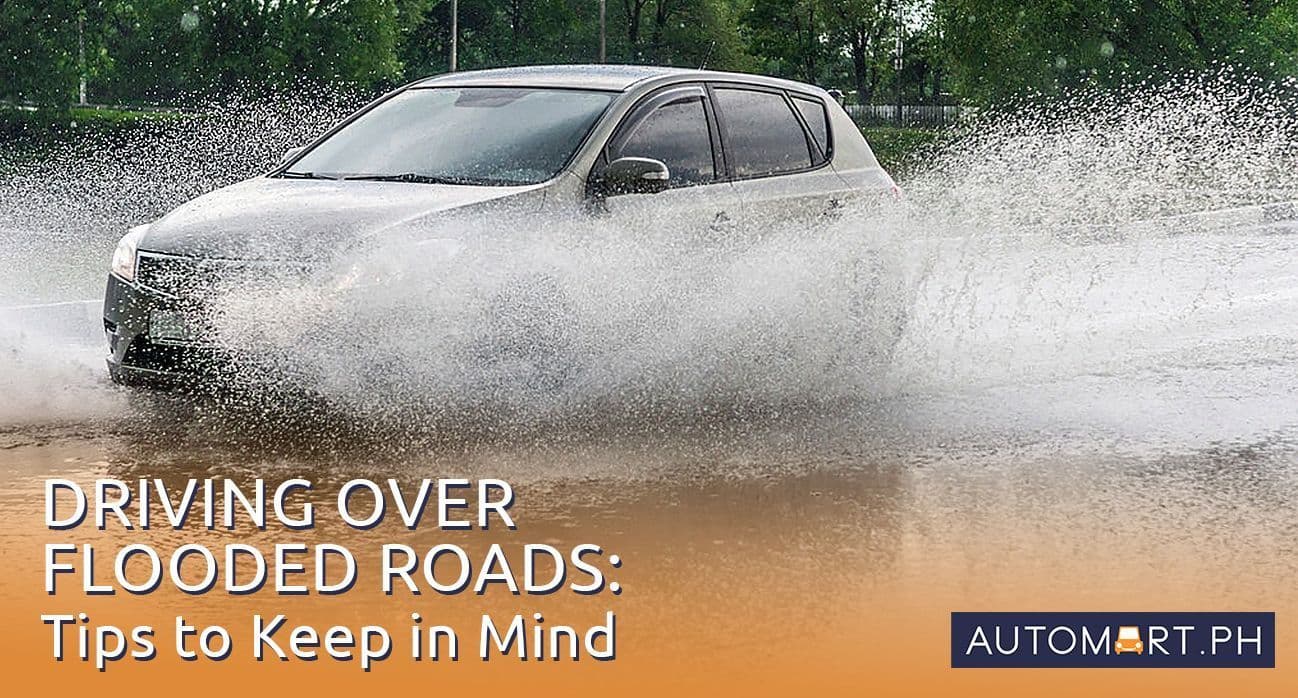
What to Do Before, During, and After Driving Over a Flood
Updated on January 07 2026
The Philippine rainy season is well under way, and you all know what this means, right? It may sound dreary but floods are a regular occurrence on Philippine roads during heavy rains. For this reason, drivers need to look out for heavy flooding during a tropical storm.

However, Filipino drivers need to deal with the inevitable. Which begs the question: Is it safe to drive over flooded roads? What should you do before, during, and after driving your car over a flood? The answers are right here.
The Ugly Truth About Driving Over Floods
The general rule is to avoid driving over floodwaters that are six inches or higher off the ground. The risks are compounded at night since it’s virtually impossible to tell how deep the floods are. Also, 12 inches of floodwater is enough to move a small car, and two feet of raging water is enough to ‘carry’ or dislodge your vehicle from the road – remember Typhoon Ondoy of 2009?

And don’t think for a moment that your jacked-up pickup truck or SUV is immune to the danger of flooding. If the floods are deep enough, those oversized wheels and chunky tires will serve as floatation devices to carry your truck into the unknown.

If your vehicle ends up stalling in the middle of a flood, water intrusion can ruin many parts of your car, like the engine, transmission, interior, and electrical systems. Flood-damaged vehicles are NOT easy to repair, and your car will lose more value if it incurred significant flood damage.
What should I do if there’s a flood ahead?
The best thing you can do is to slow down or stop the vehicle and assess the situation. How deep is the flood? Can you see other cars or motorcycles driving over it? If not, it’s best to err on the safe side and turn your vehicle around.

Most flooding-related accidents have something to do with people misjudging the actual depth of the flood. In most cases, drivers think the waters are shallow enough to drive over it and end up getting stranded in the middle of a deep flood.
Tip: If the water level is more than half of your car wheels, turn around and head to dry land immediately, and the same rule applies whether you have a sedan, hatchback, crossover, pickup truck, or SUV.
Driving Over Floods
However, most Filipinos are brave enough to drive over flooded roads. And if you really must navigate through a flood, here are essential things to remember before, during, and after going over deep water.

Before Driving Through a Flood
If you can help it, stop the vehicle and determine if the water is genuinely shallow enough to drive through. If the water level is six inches or lower, keep these in mind:
A. Turn off the air-conditioning before driving over flooded water. Your car’s A/C will trigger the auxiliary fan, and a running fan in flooded water is not a good thing since the water will end up splashing all over the engine bay. Not only is there a risk of the engine ingesting water (not good), but it might cause electrical problems later on.

B. Engage the hazard lights and turn on your headlights to make your car visible to pedestrians and other vehicles.
Tip: If the floodwater is higher than six inches, turn around or stop the vehicle and wait for the flood to subside.
When Driving During a Flood
A. Drive slowly and steadily, making sure to place your vehicle in the middle of the road. Deeper floods make it tricky to see the road ahead.
B. Keep revving the engine. If you have a manual car, maintain the first gear to keep the engine revs high and prevent the vehicle from stalling, especially if the water enters the exhaust system.
C. Patience is a virtue when driving over flooded roads. Avoid rushing it and stay calm.
After Driving Through a Flood
A. Keep the engine running. Do not turn off the engine after driving through floods.
B. Dry the brakes. When it’s safe enough, dry your car’s brakes by repeatedly pumping the brake pedal while moving. Also, avoid sudden acceleration after driving over deep waters (since the brakes are still wet).
C. Park your vehicle in a safe area, pop open the hood and give the engine bay a visual inspection. Do not be surprised if you find plastic bags, tree branches, or other debris under the hood. Remove all the garbage immediately before it causes further damage.
Conclusion
If you happen to live in flood-prone areas, consider updating your car insurance for added protection against natural calamities. When a storm is near and flooding is inevitable, consider relocating to higher ground before the water rises.

Again, it’s always better to be safe than sorry. Avoid flooded roads whenever possible. And if you must drive through a flood, remember to move slowly and keep those revs high. Stay safe, everyone!